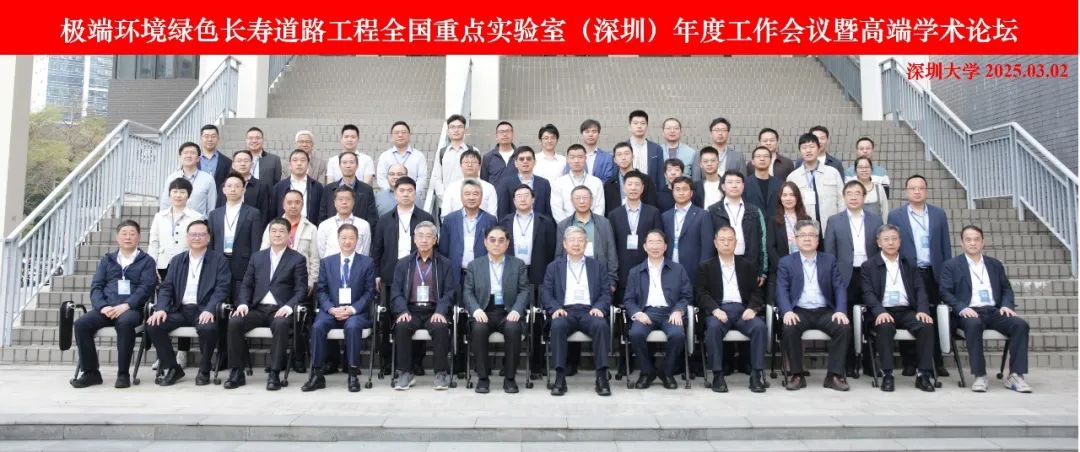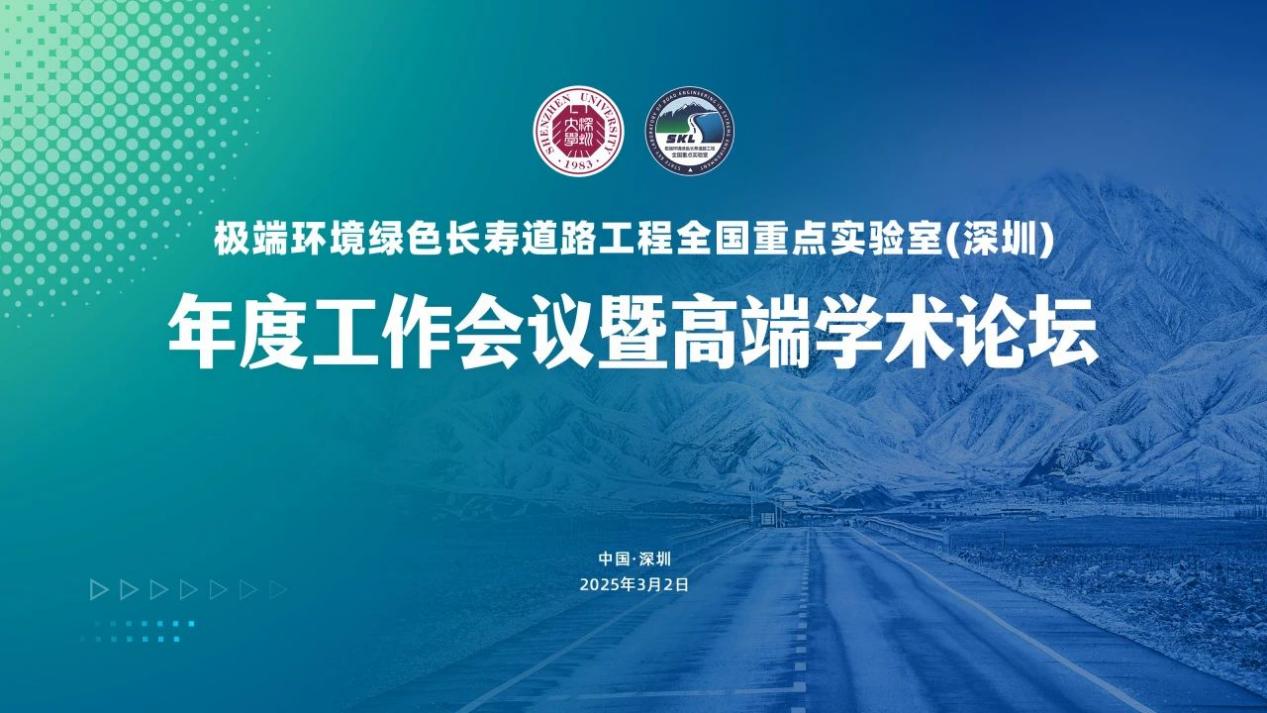
On the morning of March 2, 2025, the National Key Laboratory of Green and Long - Life Road Engineering in Extreme Environments (Shenzhen) convened its annual work conference and high - end academic forum at the A431 auditorium of the Civil and Transportation Engineering College in Shenzhen University'scanghai Campus.The event was attended by a number of prominent figures and experts. These included Academician Li Qingquan, Party Secretary of Shenzhen University; Academician Chen Xiangsheng, Dean of the Civil and Transportation Engineering College; Academician Du Yanliang of the Chinese Academy of Engineering; Academician Yu Qifeng of Shenzhen University; Academician Zheng Jianlong of Changsha University of Science and Technology; Academician Yue Qingrui of University of Science and Technology Beijing; Academician He Chuan of Southwest Jiaotong University; Academician Xing Feng of Jinan University; Academician Hao Hong of Guangzhou University (participating online); Laboratory Director and National Master of Engineering Survey and Design Wang Shuangjie; Chairman of the China Railway Society Wang Tongjun; Vice President Zhou Hui of Shenzhen University; Vice President Liu Zhaohui of Changsha University of Science and Technology; General Manager Zhang Juan of the Science, Technology and Digitalization Department of China Communications Construction Company; and Vice President Fu Zhipeng of China Communications Construction Company No. 1.Additionally, experts, teachers, and students from various institutions across the country were in attendance. The conference was chaired by Professor Ren Weixin, Dean of the Shenzhen University Institute of Urban Intelligent Transportation and Safety Operation.
The conference began with opening remarks delivered by Academician Chen Xiangsheng of Shenzhen University, Party Secretary Li Qingquan of Shenzhen University, and Master Wang Shuangjie, the director of the National Key Laboratory.
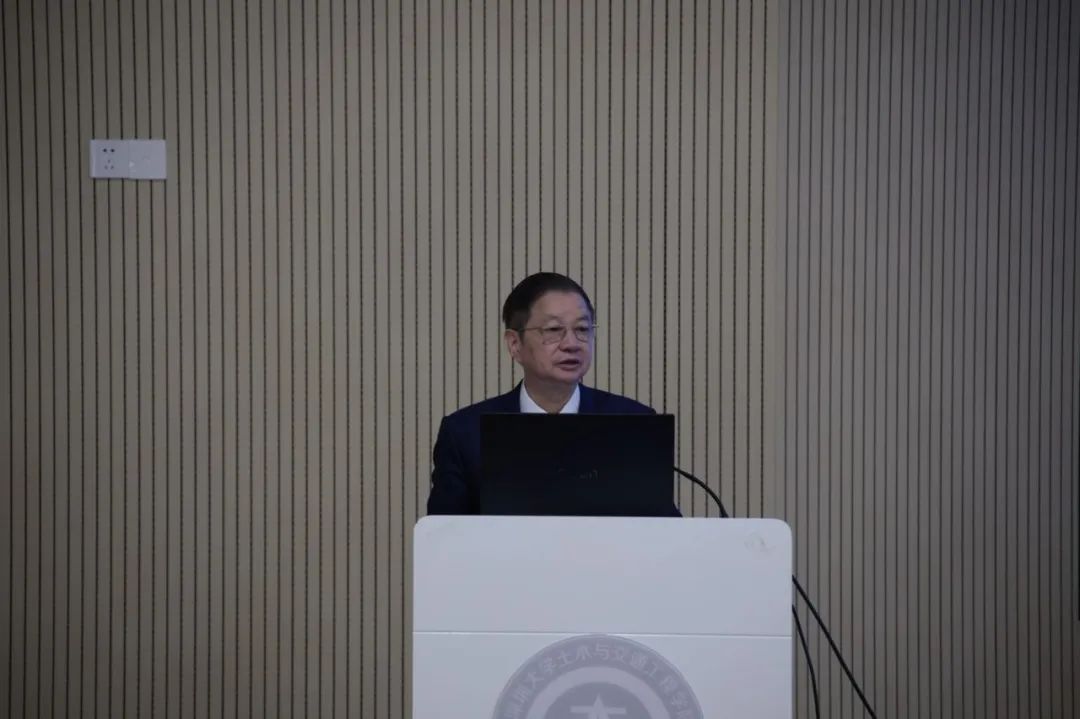
Academician Chen Xiangsheng commended the laboratory's technical breakthroughs achieved under the leadership of Academician Du Yanliang over the past year. He emphasized the mission and strengths of the Civil and Transportation Engineering College of Shenzhen University. He noted that the core topic of the forum, intelligent operation and maintenance of road engineering, is one of the key directions for the future development of civil engineering. This focus is conducive to overcoming the key technologies for green and long-life road engineering in extreme environments, promoting collaborative innovation among industry, academia, research, and application, and advancing the development of Shenzhen University's civil and transportation engineering disciplines.
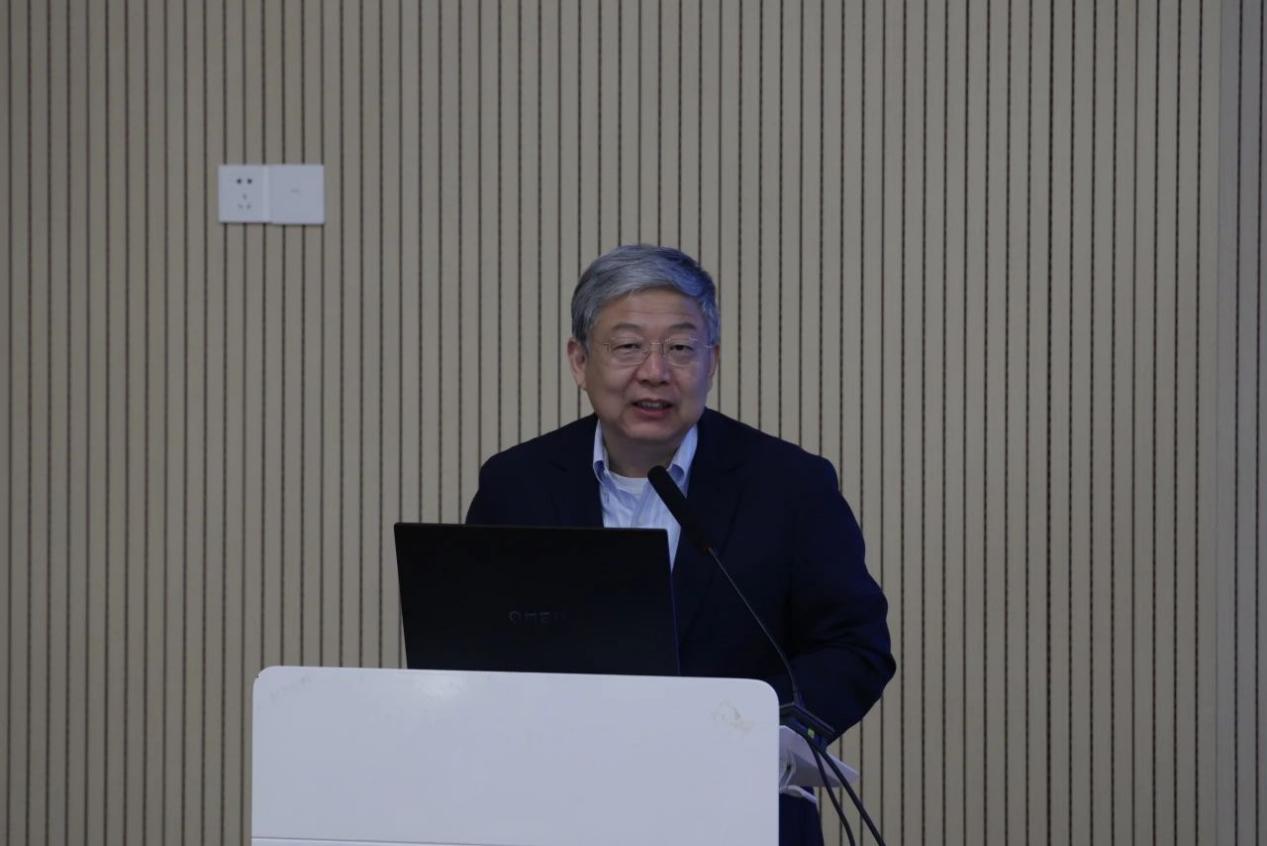
Party Secretary Li Qingquan highly praised the laboratory's rapid progress and tight work schedule this year, emphasizing the significant achievements made by the laboratory. Academician Li pointed out that the development of the laboratory is inseparable from the contributions of outstanding young talents. He stressed that more support and a favorable development environment should be provided for young talents to promote their growth and innovation. He encouraged the laboratory to continue working hard and make greater contributions to China's transportation infrastructure construction.
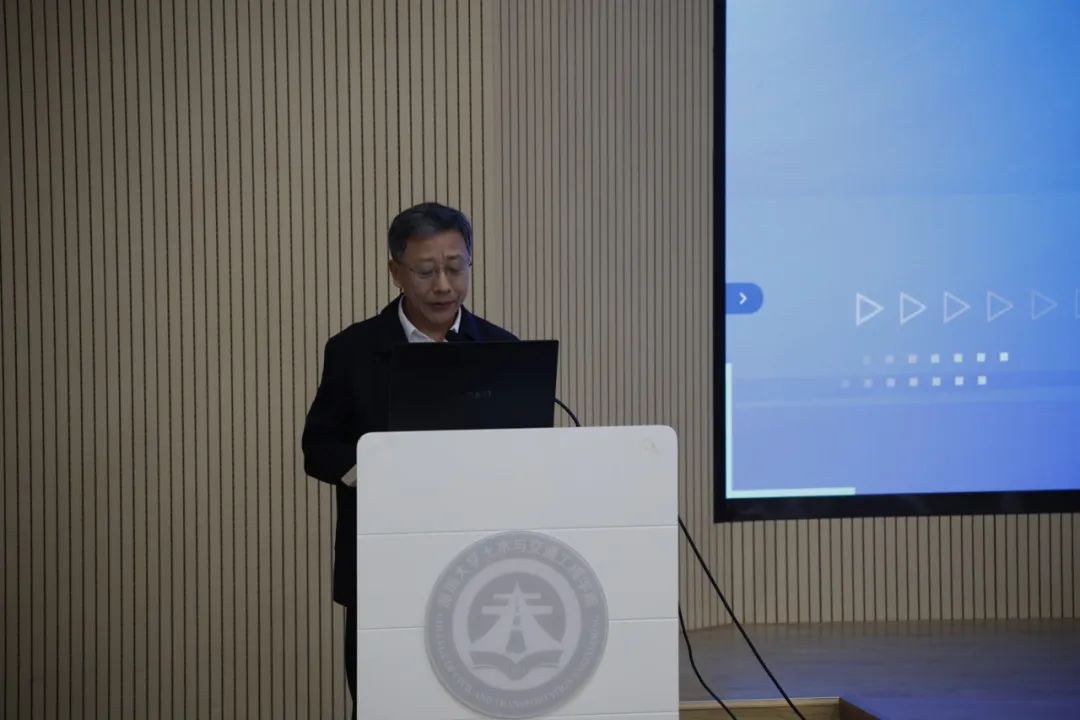
Master Wang Shuangjie reviewed the development journey of the National Key Laboratory since 2023 and highly affirmed the achievements made by the laboratory. He expressed special gratitude to the team of Academician Du Yanliang from Shenzhen University and the team of Academician Zheng Jianlong from Changsha University of Science and Technology for their outstanding contributions to the laboratory's construction and scientific research. Master Wang stated that in the future, the laboratory will continue to strengthen cooperation, join hands with all parties, and jointly promote collaborative innovation to provide strong support for solving the key technical problems in extreme environment road engineering.
Annual Report: Academician Du Yanliang
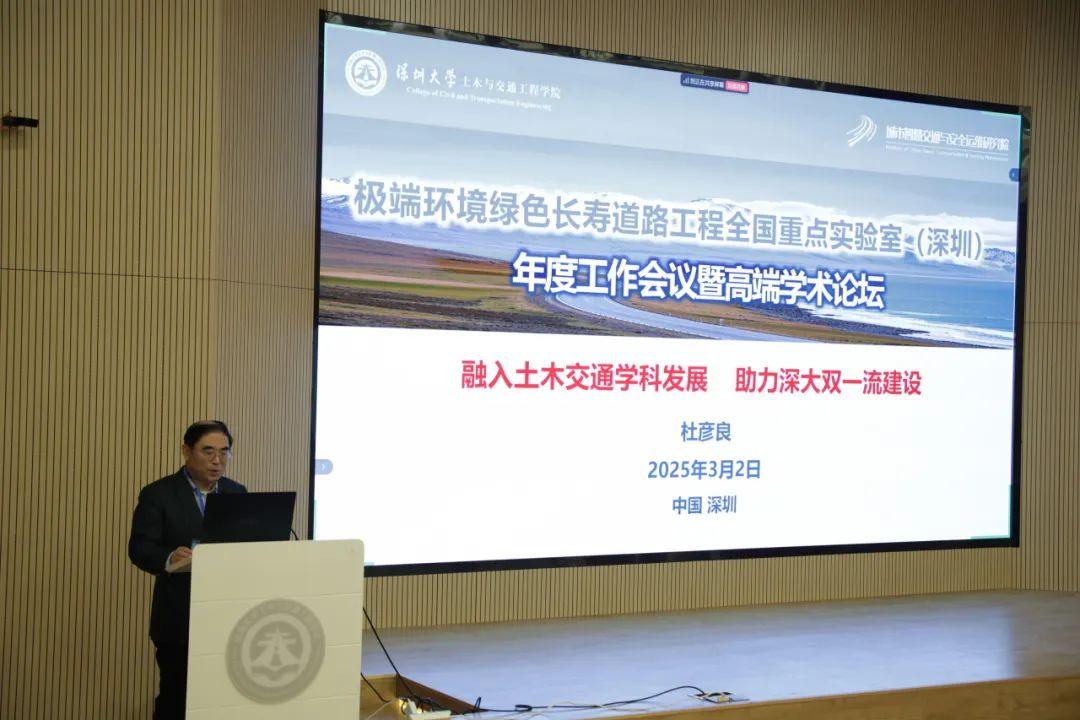
Academician Du Yanliang of the Chinese Academy of Engineering first delivered a report on the 2024 annual work summary and the 2025 annual work plan on behalf of the National Key Laboratory of Green and Long - life Road Engineering in Extreme Environments (Shenzhen) at the conference. Academician Du began by introducing the overall construction status of the national key laboratory and the construction progress of its Shenzhen section.
He then provided a detailed account of the team's work in 2024, covering scientific research tasks, platform construction, open - fund projects, team building, and international cooperation and exchange. Focusing on intelligent construction and safe operation and maintenance of transportation infrastructure such as highways and railways, he highlighted the team's significant achievements in several key areas. These included new - type fiber - optic sensing, intelligent perception of structural safety, rapid detection of hidden defects, precise identification and intelligent diagnosis of structural catastrophic failures, space - air - ground intelligent monitoring and collective intelligence perception technologies, intelligent management and dynamic tracking platforms, and key technologies for structural durability assessment and improvement.
Meanwhile, Academician Du summarized the two major characteristics of the team's work in conjunction with the two key tasks undertaken by the national key laboratory:intelligent monitoring and early warning of wide - area hidden catastrophic changes and key technologies for disaster prevention, mitigation, and intelligent operation and maintenance in coastal areas.The first characteristic isthe focus on extreme cold and high - altitude environments to serve the construction and operation of major national projects.The second isthe focus on the safety and operation and maintenance of infrastructure in coastal extreme environments to support the development and construction of the Greater Bay Area.
In conclusion, Academician Du introduced the team's overall work objectives for 2025, as well as key tasks in several areas. These include advancing ongoing projects, actively applying for new projects, serving major national projects, improving institutional construction, building experimental platforms, cultivating talent teams, strengthening international cooperation and exchange, and supporting the development of relevant disciplines.
Following the conclusion of the report, the conference transitioned into the High - End Academic Forum session, where Academician Yue Qingrui, Academician He Chuan, and Master Wang Shuangjie respectively delivered keynote speeches.
Keynote Report 1: Exploration of Monitoring and Early Warning Technologies for Road and Bridge Safety RisksbyAcademician Yue Qingrui
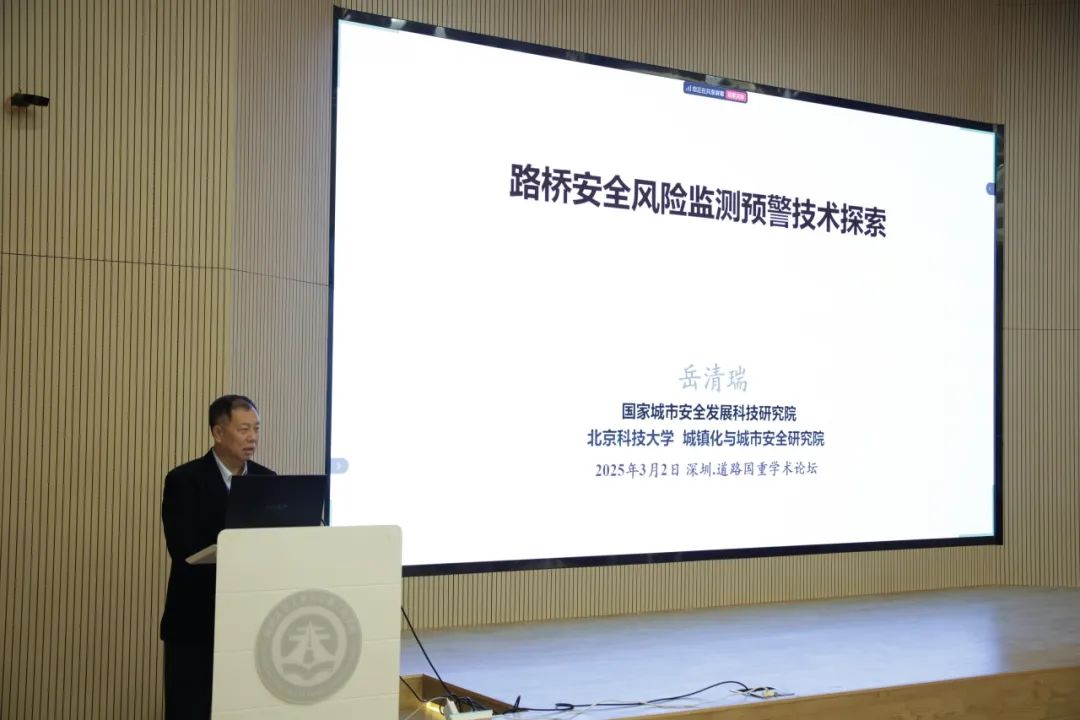
Academician Yue Qingrui introduced his team's exploratory research from three aspects: the challenges faced by road and bridge safety, the "space-air-ground integrated" monitoring and early warning technology, and future challenges and prospects. Academician Yue pointed out that the safety risks of China's roads and bridges have distinct characteristics, including discreteness, suddenness, concealment, and complexity. The tasks of safety monitoring and early warning are heavy, difficult, and highly challenging. Based on the safety needs of roads and bridges, it is necessary to consider establishing a safety management and control system architecture based on the safety "risk source - disaster-bearing body - disaster reduction capacity" theory, and to enhance the level of risk perception, early warning, and response through intelligent means to achieve scientific, precise, and systematic prevention and resolution of road and bridge safety risks.
He then went on to detail the space-air-ground integrated monitoring and early warning system, which consists of "space-based" satellite remote sensing, "air-based" drone inspections, and "ground-based" IoT monitoring. This system aims to achieve high-density, high-precision, and high-timeliness monitoring and early warning across the entire domain, with full information and around the clock, to ensure the safe operation of wide-area roads and bridges and prevent major accidents.
Keynote Report 2: Progress in Intelligent Construction Technology of Tunnel Blasting Method by Academician He Chuan
Academician He Chuan introduced the progress of his team from four aspects: the technical challenges of existing tunnel construction, the history and current status of the tunnel blasting method, the innovation of intelligent construction technology and theory, and their application effects in tunnel projects. Academician He emphasized that the blasting method remains the mainstream approach for constructing large transportation tunnels in complex environments. It is necessary to continue promoting intelligent tunnel construction by integrating mechanization, automation, informatization, and existing technologies. Through comprehensive perception, interconnection, processing, and learning, intelligent decision-making in tunnel construction can be achieved. This includes establishing a technical system that integrates intelligent rock mass classification, intelligent decision-making on construction methods and support systems, and intelligent mechanized equipment for all construction processes, to ensure the quality and safety of tunnel construction. Currently, intelligent machinery and equipment for tunnel blasting have been widely applied in major national projects such as the Sichuan-Tibet Railway, significantly increasing construction speed, reducing construction risks, and achieving remarkable economic benefits.
Keynote Report 3: Experimental Engineering of Highways in Permafrost Regions by Master Wang Shuangjie
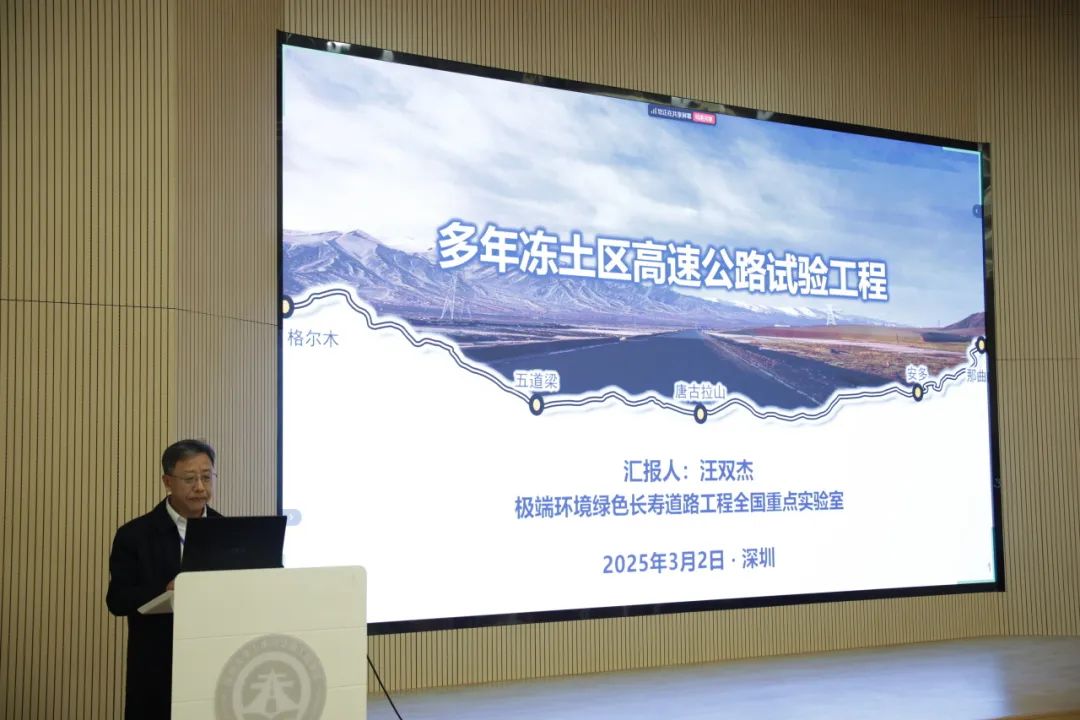
Master Wang Shuangjie introduced his team's work on the experimental engineering of highways in permafrost regions from three aspects: the background of the Qinghai-Tibet Highway construction, the implementation plan, and the directions for innovation. He detailed the development of the Qinghai-Tibet Highway since its completion and opening to traffic in 1954, as well as the challenges faced in constructing highways in permafrost regions. He pointed out that the Qinghai-Tibet Highway has made significant contributions to the peaceful liberation, poverty alleviation, and social development of Tibet in different historical periods. However, due to early insufficient understanding of permafrost, the highway faced many problems, leading to multiple reconstruction and remediation efforts.
Master Wang focused on the fourth phase of the remediation work of the Qinghai-Tibet Highway since 2008. He explained the mechanism of permafrost subgrade thaw settlement and how to regulate energy and reduce thaw settlement by reasonably determining the subgrade height and setting up special-structured subgrades. He emphasized that the significant reduction in the disease rate of the Qinghai-Tibet Highway is due to the structural remediation measures taken at various high-thaw-risk sections. These technologies and experiences have provided valuable guidance for constructing highways in permafrost regions in China.
Academician Du Yanliang concluded the session. He expressed his gratitude to all the units for their strong support and meticulous guidance to the laboratory. He stated that the laboratory would continue to work hard and achieve more in the new year. He hoped that under the guidance and support of experts and colleagues, all team members would unite, strive together, and jointly plan for the development of road engineering, contributing to overcoming challenges in extreme environments. The summary was acknowledged by all participants, and the meeting concluded amidst warm applause from the entire audience.
